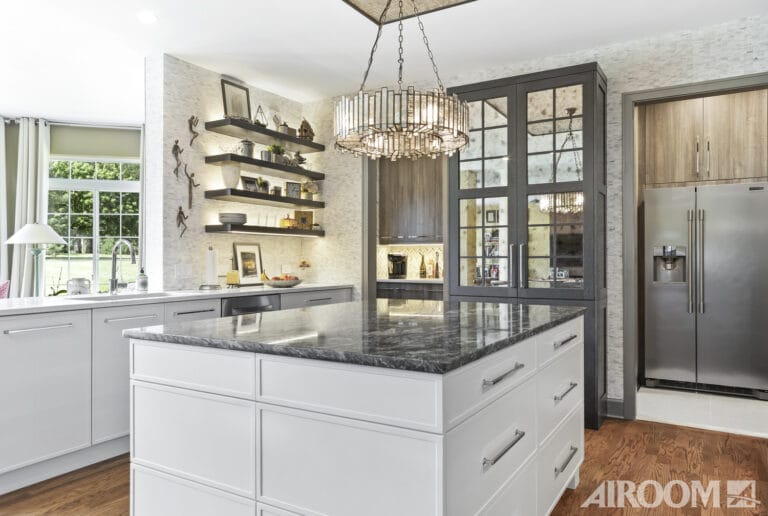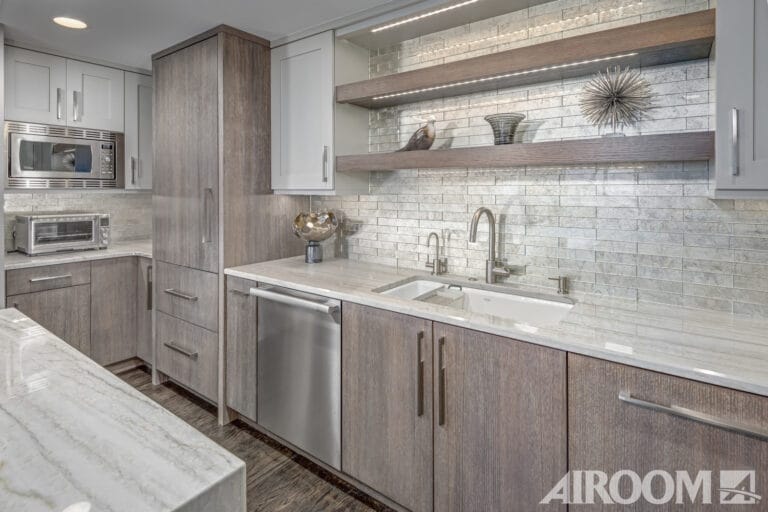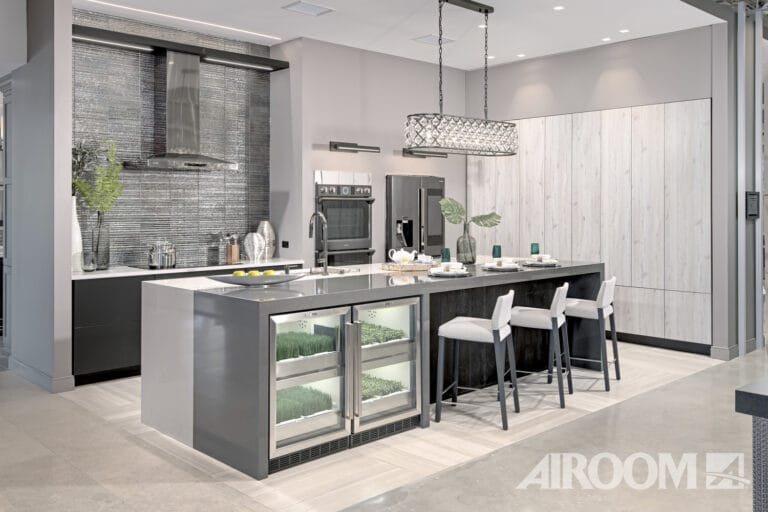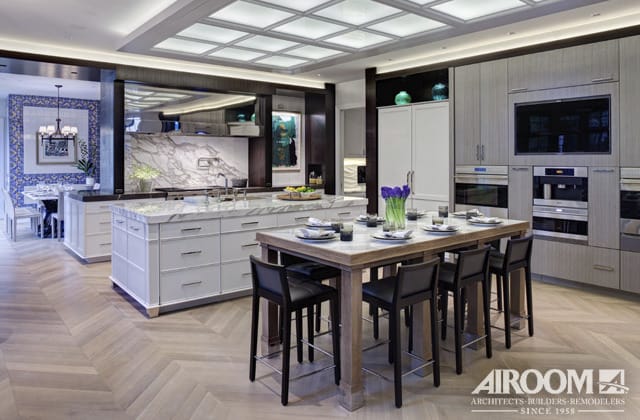Related Posts
Tags
The main difference between a three-season room and a sunroom lies in their usability throughout the year. A three-season room is designed for use during spring, summer, and fall, lacking the insulation needed for winter. In contrast, a sunroom, also known as a four-season room, is equipped with advanced insulation and heating, making it suitable for year-round use. In this blog, we will explore the difference between a three-season room and a sunroom in more detail, along with considerations like cost, construction, and maintenance.
Key Takeaways
- Three-season rooms provide an economical way to enjoy outdoor views with limited insulation, suitable primarily for spring, summer, and fall use.
- Sunrooms, particularly four-season models, are designed for year-round use with advanced insulation and heating options, enhancing comfort in all climates.
- Cost, intended use, and climate considerations are essential factors for homeowners when deciding between a three-season room and a sunroom.
Understanding Three-Season Rooms
A three-season room is an ideal addition for homeowners who love to enjoy the beauty of the outdoors without fully exposing themselves to the elements. These rooms are typically enclosed with glass and designed to maximize natural light while being used primarily during the warmer months. Expansive windows and doors are common features, blending indoor living with outdoor views seamlessly.
These rooms are not built for heating or cooling year-round, making them a more budget-friendly option compared to four-season rooms. Depending on your local climate, a three-season room can be enjoyed for most of the year, but they are mainly intended for spring, summer, and fall use. They serve as versatile spaces for relaxation and entertaining while still offering protection from the weather.
Imagine converting an unused porch into a three-season room; this can enhance your living space affordably and allow for the enjoyment of nature without full exposure to the elements. Whether you’re hosting a summer party or simply enjoying a quiet afternoon with a book, three-season rooms offer a perfect retreat.
Defining Sunrooms
Sunrooms, also known as four-season rooms, are designed to be enjoyed year-round, offering a seamless blend of indoor and outdoor living. These all-season sunrooms enhance the overall living space of a home, providing a bright and welcoming environment that can be used for various activities such as entertaining, hosting birthday parties, barbecues, and enjoying a screen room.
There are two main types of sunrooms: three-season sunrooms and four-season sunrooms. While three-season sunrooms are similar to three-season rooms in their limited insulation and seasonal use, four-season sunrooms are designed with advanced insulation and heating options, making them usable throughout the year. Features like dual-pane windows and added insulation differentiate four-season sunrooms from their three-season counterparts, ensuring continuous usability.
Some prefabricated sunroom constructions offer quicker installation and cost benefits, making them an attractive option for homeowners looking to enhance their living space with abundant natural light and large windows. Whether you opt for a three-season or four-season sunroom, the addition will undoubtedly boost your home’s appeal and functionality.
Key Differences in Insulation and Temperature Control
One of the most significant differences between three-season rooms and sunrooms lies in their insulation and temperature control. Three-season rooms typically utilize single-pane glass, which offers less insulation than the alternatives. In contrast, sunrooms often feature double-pane or even double-insulated glass panes, significantly improving insulation and energy efficiency.
Sunrooms designed for year-round use employ advanced thermal engineering, including double-glazed windows filled with argon gas for better thermal insulation compared to those filled with air. Additionally, low-E coatings on glass help to reflect heat during summer and retain warmth during winter, making these rooms comfortable in extreme temperatures.
The choice of insulation and glass options directly impacts the usability and comfort of these spaces. While a three-season room may require a space heater during cooler months, a well-insulated sunroom can maintain a comfortable temperature year-round without the need for separate heating or cooling systems, even in cold weather.
Usage Scenarios for Three-Season Rooms
Three-season rooms are primarily used during late spring, summer months, and early fall, making them perfect for enjoying the milder months. These rooms are ideal for activities like entertaining, hosting parties, and relaxing in the pleasant weather. They also help mitigate summer issues such as pests and unpredictable weather, offering a controlled environment for leisure activities during the cold winter months.
These spaces provide a safe environment for children and pets, allowing them to experience fresh air while remaining contained. Converting an unused porch into a three-season room can enhance living space affordably, allowing homeowners to enjoy nature without full exposure to the elements, creating additional usable space.
Whether you’re looking for a cozy area to unwind or a lively space for gatherings, both three-season rooms offer a versatile and enjoyable solution in living spaces.
Year-Round Usability of Sunrooms
The design of four-season rooms includes:
- Advanced thermal engineering, allowing them to maintain comfortable temperatures in all seasons
- Features such as insulated glass and efficient thermal engineering that differentiate these rooms from their three-season counterparts
- Superior insulation and heating capabilities, providing comfortable use year-round
Robust heating and cooling solutions, including air conditioning and hvac systems, are necessary for year-round comfort, making these rooms an excellent investment for homeowners looking to enhance their living space. Effective insulation is crucial for the year-round usability of four-season rooms, ensuring energy efficiency and comfort regardless of the weather conditions.
Adding a four-season room can significantly boost your home’s value and living space, providing a warm and inviting environment throughout the year. Whether it’s the middle of winter or the height of summer, a well-designed sunroom offers year-round comfort and usability, making it a valuable addition to any home.
Construction and Material Variations
The construction materials and methods used for three-season rooms and sunrooms vary significantly. Frame construction for four-season rooms utilizes thermally engineered aluminum, ensuring better insulation and durability. In contrast, three-season rooms generally feature large glass windows and may have removable screens to enhance ventilation.
The choice of materials, such as glass options and framing systems, plays a crucial role in the performance and longevity of these rooms. Thermally engineered materials are essential for maintaining comfortable temperatures and ensuring energy efficiency in four-season rooms.
Understanding these construction variations can help homeowners construct the difference in making informed decisions based on their specific needs and preferences, which are often constructed over time.
Cost Comparison
When it comes to cost, three-season rooms typically have a lower initial investment compared to sunrooms, especially four-season models that require more insulation and heating. The cost range for a three-season sunroom can vary significantly, as can that of a four-season sunroom.
The choice of materials, such as aluminum versus wood framing, significantly influences the overall cost and durability of a three-season sunroom. Local building codes and permit requirements can also add to the cost, so it’s essential to consider these factors when planning your room addition.
Enhancing Your Living Space
Investing in a sunroom can significantly enhance your property’s value, with potential returns of 50% to 100% of the installation cost. Benefits of adding a sunroom include:
- Increasing home value
- Improving family lifestyle
- Expanding living space with four-season rooms
- Adaptability for various uses, such as home offices or recreation areas.
A three-season room allows homeowners to enjoy outdoor views while being sheltered from harsh weather. Budget-friendly sunroom style makeovers can include adopting a bohemian style, utilizing various textures and plants for a casual and inviting atmosphere.
Transforming a sunroom addition into such a versatile space can begin to cater to diverse family activities, making it a valuable sunroom option for your home.
Natural Light Benefits
Natural light exposure can significantly reduce stress and improve overall well-being. Spending time in well-lit spaces helps enhance mood and may alleviate symptoms of depression. Exposure to sunlight is vital for vitamin D production, supporting immune function and overall health. Taking a moment to rest in these environments can further enhance the benefits.
Adding large windows or glass walls in sunrooms maximizes natural light, making the space feel open and airy. The ample natural light in sunrooms can help reduce energy usage for artificial lighting during the day.
Three-season rooms and four-season sunrooms provide abundant natural light, health benefits, and a bright atmosphere.
Maintenance Requirements
Three-season rooms typically require less upkeep compared to traditional decks, making them a convenient choice for homeowners. They also require less maintenance than sunrooms due to their simpler structure. Sunroom frames can experience issues like warping and leaking, necessitating regular checks.
Replacing damaged screens or panes in sunrooms promptly is crucial to avoid further issues. Maintaining climate control in a sunroom can help manage condensation and prevent water damage.
Aluminum frames require less upkeep compared to other materials used for frames in three-season rooms and sunrooms. Understanding maintenance needs is crucial for homeowners. It allows them to make informed decisions that align with their preferences and lifestyle.
Choosing the Right Option for Your Home
Deciding between a three-season room and a sunroom depends on various factors, including budget, climate, and intended use. Three-season rooms are generally more affordable than sunrooms designed for year-round use, impacting decision-making on which to choose. Homeowners should evaluate their lifestyle needs, such as entertaining or relaxation, when choosing a room type.
Understanding how each room type performs under various climate conditions can help homeowners make better choices. Recognizing the differences between three-season and four-season rooms empowers informed choices and enhances living space.
Considering these factors helps homeowners access the best quality option for their specific needs and preferences.
Making the Right Choice for Your Home
Deciding between a three-season room and a sunroom ultimately depends on your specific needs, budget, and climate. Three-season rooms provide an affordable way to enjoy the outdoors during the milder months, creating a cozy yet functional space. On the other hand, sunrooms offer the comfort of year-round usability with advanced insulation and heating, making them a versatile addition to your home. Both options not only enhance your living area but also boost your property’s value.
At Airoom Architects, Builders and Remodelers, we specialize in bringing personalized design and remodeling solutions to life. Whether you’re looking to add the charm of a three-season room or the functionality of a sunroom, our expert team can help transform your vision into reality. With decades of experience in home remodeling in Chicago, we’re here to guide you every step of the way. Take the first step toward elevating your living space with us today!
Frequently Asked Questions
What is the main difference between a three-season room and a sunroom?
The main difference between a three-season room and a sunroom is that three-season rooms are intended for use during milder months, whereas sunrooms are insulated and suitable for year-round enjoyment.
How much does a three-season sunroom typically cost?
A three-season sunroom typically costs between $20,000 and $60,000, depending on factors such as size and materials. Therefore, it’s essential to consider your specific requirements and budget when planning for this investment.
Can a three-season room be upgraded to a four-season room?
Yes, a three-season room can be upgraded to a four-season room, but this requires significant modifications, such as adding insulation and upgrading to double-pane windows.
What maintenance is required for sunrooms?
Proper maintenance of sunrooms includes regular inspections for warping and leaking, timely replacement of damaged screens or panes, and managing climate control to prevent condensation. Ensuring these aspects are addressed will help preserve the integrity and comfort of your sunroom.
How does natural light benefit a sunroom?
Natural light benefits a sunroom by reducing stress and enhancing mood while supporting vitamin D production and lowering the need for artificial lighting. These advantages create a more inviting and healthful space.
- Question to Ask a Contractor About Basement Remodeling - April 22, 2025
- What are the Benefits of Basement Remodeling? - April 15, 2025
- What’s the Difference Between a Three-Season Room and a Sunroom? - April 7, 2025










Related Posts
Question to Ask a Contractor About Basement Remodeling
What are the Benefits of Basement Remodeling?
The Basement Debate: Digging Deep into the Value of Finishing Your Basement